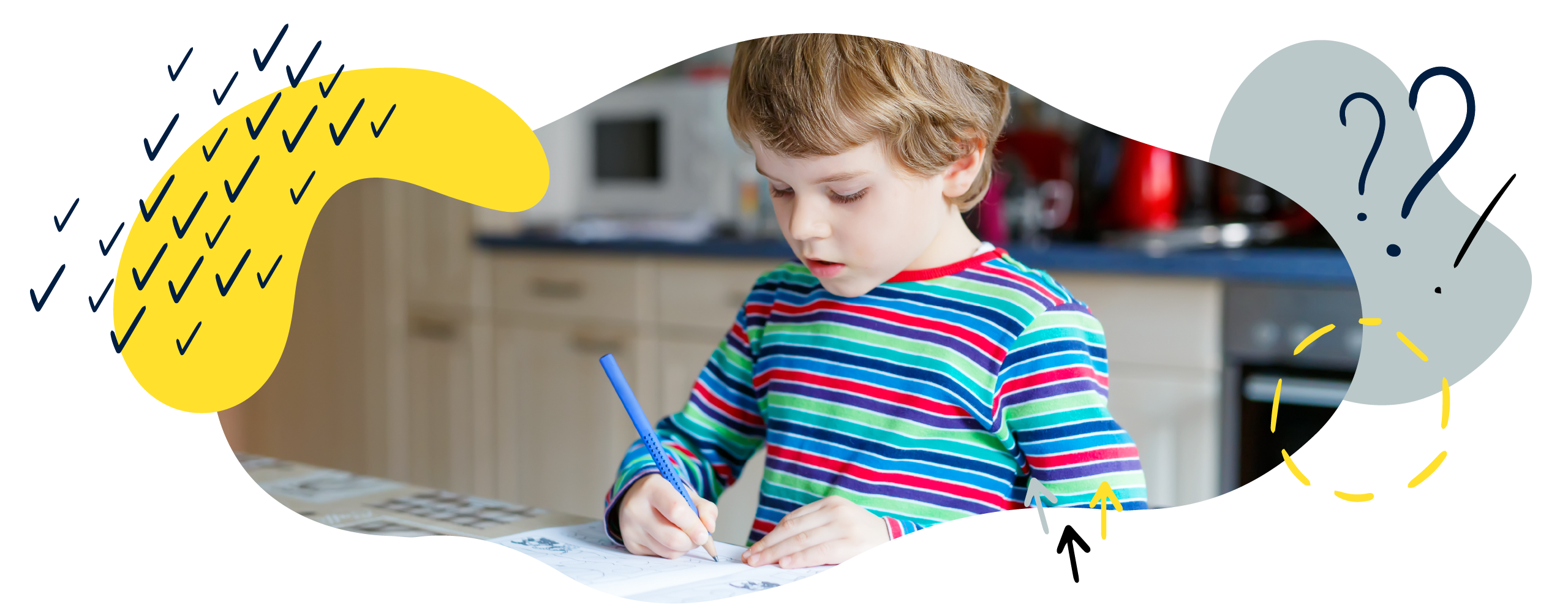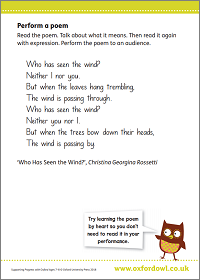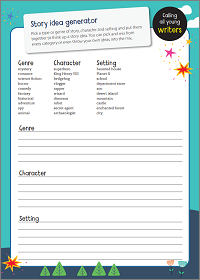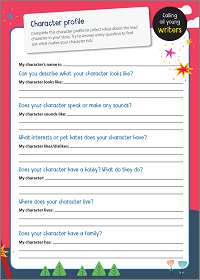Writing in Year 3 (age 7–8)
In Year 3, your child will continue to develop across the different strands of writing: imagination and ideas, audience and purpose, handwriting or typing, spelling, grammar, and punctuation. Read on to discover the National Curriculum expectations for writing in Year 3, and to find out how you can support your child at home.
How to help at home
There are lots of ways you can help your Year 3 child with writing. Here are our top ideas.
1. Read to your child
While children do learn new language and ideas from speaking and listening, the type of language we use in writing is often very different from that in speech. Reading regularly to your child, especially longer chapter books that they might not be able to yet read independently, is a great way to support their writing.
While your child will have some favourite books and types of book that they’ll want to listen to again and again, try to make sure they get to hear a range of different types of books, including fiction and non-fiction. This is useful for their writing because it models lots of language styles.
For books to read with your child, take a look at our free eBook library.
2. Have your child to read to you
Making time to hear your child read isn’t just good for their reading. Seeing words in print helps them to understand the words, to spell them, and to see how grammar and punctuation are used to make meaning.
When you read, occasionally talk about why the author has decided to include something and how they written it. For example:
‘I wonder why the author has chosen to describe the castle as “gloomy”? I wonder what that tells us about what might happen there?’
3. Try some real-world writing
Writing for a real purpose can be a great way to fit in some practice. Writing cards, shopping lists, or letters/emails to relatives can be motivating real life reasons for writing, and can show children how useful it is to be able to write well.
Your child might enjoy keeping a diary or writing short stories based on books they have read or toys they enjoy playing with. Be sure to encourage your child to write about what most interests them, as this is the best way to keep them enthusiastic.
4. Tell stories aloud
Giving your child the opportunity to tell stories orally is a great way to get them used to structuring their ideas and using adventurous language. If they’re not sure where to start, see if they can retell a story that they already know well, like The Magic Paintbrush or Rumpelstiltskin.
If your child finds it useful to plan out their story first, try our free Story mountain to make a great plot with a beginning, middle, and end. Your child might also enjoy reciting poetry – see if your child can memorise and perform ‘Who has seen the wind?’ with our Perform a poem activity sheet.
Activity: Story mountain
Complete the story mountain to plan your story with a beginning, middle, and end.
Activity: Perform a poem
Read the poem, talk about what it means, and perform it to an audience.
5. Find story inspiration
You can find fun story ideas anywhere! Why not raid your kitchen cupboards or hunt through the attic to find lost treasures? Anything from an old hat to a telescope will do the trick. What could the object be used for? Who might be looking for it? What secrets could it hold? Suggest different genres such as mystery or science fiction and discuss how the item might be used in this kind of story.
Real-world facts can also be a great source of inspiration. For example, did you know a jumping flea can accelerate faster than a space rocket taking off into orbit? What crazy story can your child make out of this fact? Newspapers and news websites can be great for finding these sorts of ideas.
For more storytelling ideas, download our free Story idea generator or our Character profile activity sheet.
Activity: Story idea generator
Mix together a genre, character, and setting to think up an imaginative story idea.
Activity: Character profile
Come up with lots of interesting details about the lead character in your story.
6. Draw your ideas first
If your child isn’t sure where to start with a story or even a piece of non-fiction, it can sometimes be helpful to sketch out their ideas first. For instance, can they draw a picture of a dastardly villain or a brave hero? How about a scary woodland or an enchanted castle?
Your child might also find it useful to draw maps or diagrams. What are all the different areas of their fantasy landscape called? How is the baddie’s base organised?
Some children might enjoy taking this idea a step further and drawing their own comics. This is great practice – it stretches your child’s creativity, gets them thinking about plot, character, and dialogue, and is a big confidence boost once they’ve finished and have an amazing story to look back on.
What your child will learn
In Year 3 (age 7–8), your child will work towards being able to:
-
- Plan their writing by:
-
- Discussing writing similar to that which they are planning to write in order to understand and learn from its structure, vocabulary and grammar
- Discussing and recording their ideas.
-
- Draft and write by:
-
- Composing and rehearsing sentences orally (including dialogue), progressively building a varied and rich vocabulary and an increasing range of sentence structures
- Organising paragraphs around a theme
- In narratives, creating settings, characters and plot
- In non-narrative material, using simple organisational devices (for example, headings and sub-headings).
-
- Evaluate and edit by:
- Proof-read for spelling and punctuation errors.
- Plan their writing by:
Handwriting, spelling, grammar, and punctuation are all important aspects of writing too. You can find out more about them on our dedicated pages:
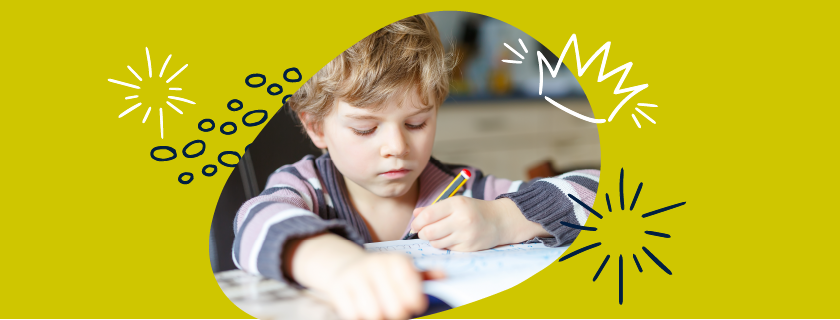
Handwriting in Year 3 (age 7-8)
Find out more about handwriting in Year 3 at Primary School.

Spelling in Year 3 (age 7-8)
Find out more about spelling in Year 3 at Primary School.
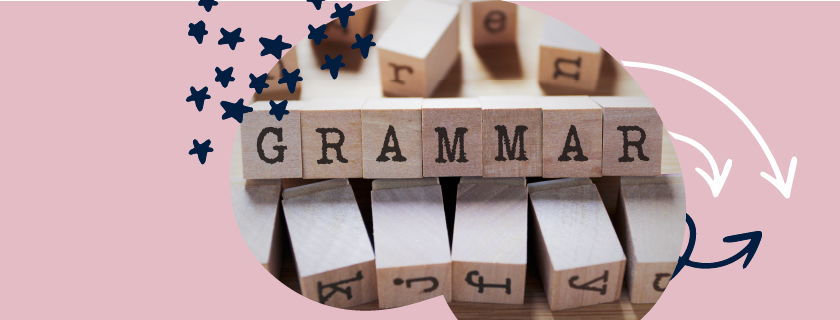
Grammar and punctuation in Year 3 (age 7-8)
Find out more about grammar and punctuation in Year 3 at Primary School.
